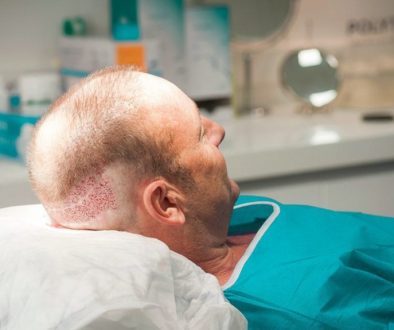Can Physicians Predict how Hair Loss will Progress?
This question, from a member of our hair loss social community and discussion forums, was answered by Coalition hair transplant surgeon Dr. Michael Beehner:
I’m currently balding and want to know how far my hair loss will eventually progress. Can physicians analyze my scalp and determine my eventual Norwood baldness class and how far my hair loss will progress?
 Your question is one that hair transplant surgeons wrestle with constantly and are always trying to figure out in their daily practices. We have several things that help us an awful lot though.
Your question is one that hair transplant surgeons wrestle with constantly and are always trying to figure out in their daily practices. We have several things that help us an awful lot though.
Most important is the patient’s age. If the patient is in his late teens, twenties, or even early thirties, then all bets are off and a surgeon could be very wrong in telling the patient he will never bald. And the absence of miniaturization in the younger ages, though a little reassuring, is no guarantee that they won’t bald some day. I agree that the family history is helpful to know, but no guarantee either way. Exceptions are very common.
I agree that looking over the various areas of the scalp with high magnification (30-60x power) for miniaturization is very valuable. I feel it gives me a peek at perhaps the next 15-20 years of the patient’s life. So if I have a 45 or 50 year old man in front of me, I usually will tell him that it’s highly unlikely that he will lose his hair on top if I see no miniaturization. If a hair surgeon sees more than 5% miniaturization in an area, then that usually means that eventually they will go on to thin in that area over the years, and, if they live long enough, reach shiny baldness in that area. One very helpful sign for me is whether or not, when I view the patient’s scalp from above, if I see even the slightest hint of a U-shaped difference in density near the fringes, no matter how subtle, I almost always find miniaturization on magnified exam and feel very confident they will eventually probably end up a Norwood VI. The age at which that will happen can vary drastically from one man to another. And of course, if they take finasteride (Propecia), their hair loss will often be stalled at least another ten years. To me, whether a man is a Norwood 3-v, IV, or a class V means very little to me in terms of what my plan will be; I treat them all as I would a Norwood VI patient (U-shaped baldness). The progression of a Norwood IV to an advanced Norwood VI can be easily seen by simply watching Seinfeld re-runs. In the early years of the show Jason Alexander was a Norwood IV. Halfway through he was a Norwood V, and near the end of the show’s run he had reached a Norwood VI. So I can turn on the show and tell about what year it was just by looking at “George Costanza’s” head.
I certainly would not tell the 29 y/o patient above that he probably will never bald, nor even a 35 year old. A now-retired doctor from out west used to include in his lectures photos of several famous Hollywood types who seemingly had full heads of hair up to the age of 40 and then went on to be nearly bald by the age of 60. Some of them, as best as I can recall, were Johnny Carson, Clint Eastwood, Don Ameche, Paul Newman and several others.
Ironically, even though it’s nice to be on finasteride to preserve your hair longer, it does somewhat “mask” what is really going on when evaluating your heredity’s affect on your hair-loss status. 35 is my cutoff age for starting to feel confident about where a man is heading the rest of his life. I’m sure I will make an occasional mistake, but I think 95%+ of the time, I will be pretty accurate. After 35 I usually will agree to do the temples, bring the recessions further forward and fill in the vertex – providing there is a generous cushion of donor supply present.
In summary, I think most patients in their late 20’s and early 30’s should be looking mainly for a framing of the face in front and not looking to have the crown/vertex in the back filled in.
Mike Beehner, M.D.
____________________
Blake – aka Future_HT_Doc
Editorial Assistant and Forum Co-Moderator for the Hair Transplant Network, the Hair Loss Learning
Center, the Hair Loss Q&A Blog, and the Hair Restoration Forum
Follow our community on Twitter
Watch hair transplant videos on YouTube
Technorati Tags: hair loss, hair transplant, balding, finasteride, Propecia



